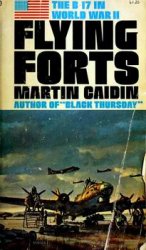In the pre-Roman period Nabataea was the main connection point for inland caravans and cargo offloaded from Red Sea vessels. The Sabaeans in southern Arabia controlled the main groves that produced the valuable frankincense and myrrh, but other Arab nations were involved in bringing these incense stocks to Mediterranean markets. Diodorus reports that: ‘by custom the Nabataeans bring down to the Mediterranean Sea their frankincense and myrrh along with the most valuable kinds of spices. They procure these goods from those who convey them from southern Arabia.’ The intermediaries in this trade were Gerrhaeans from the Persian Gulf and a people called the Minaeans who occupied lands flanking the Red Sea. Diodorus explains that ‘the Gerrhaeans and Minaeans convey frankincense and other aromatic wares from southern Arabia to Nabataea and Palestine’.8
Some of this ancient incense traffic was probably conducted through a network of inland caravan courses that connected various regional oasis stations in inner Arabia. This was not a straightforward route and most incense seems to have passed through a series of intermediate suppliers. Strabo describes how ‘the Arabs who live close to one another receive in continuous succession loads of aromatics coming from the Sabaeans’. Through a sequence of regional deals, ‘they convey this product to their neighbours as far away as Syria and Mesopotamia.9
Strabo used similar sources to Diodorus in his account of the Nabataeans, including a work by the Greek author named Artemidorus who was writing around 100 BC. Artemidorus emphasised the importance of seaborne trade to the Nabataeans and describes how merchants from different Arab nations sent ships to the northern coasts of the Red Sea. Strabo explains that ‘near the island of Phocae there is a promontory linked to the Rock ofthe Nabataeans and Palestine. The Minaeans, Gerrhaeans and all the neighbouring peoples convey their aromatics loads to this location.'10
By the first century BC, most incense was shipped aboard Arab dhows that visited ports in southern Arabia and carried cargo to harbours in the northern quarter of the Red Sea. On these journeys Arab vessels also visited settlements on the east coast of Africa and Strabo explains that ‘the Sabaeans engage partly in agriculture and partly in the traffic of aromatics produced in their homeland and Africa. To acquire African aromatics they sail across the sea in leather boats.'11
The Minaeans also shipped incense through Ptolemaic Egypt and established trade agreements with Mediterranean sea-captains in Alexandria. Using these contacts, the Minaeans sent their cargoes to Greek cities across the eastern Mediterranean. The second century coffin of a Minaean frankincense merchant named Zayd’il has been found at the Egyptian city of Memphis and dedications from the sanctuary of Artemis on the Greek island of Delos record that Minaean merchants were operating on the island during the second century BC.12
Confirmation comes from southern Arabia where early Minaic inscriptions mention expeditions to Egypt.13 The Minaeans brought their profits back to Arabia to buy further incense stocks from the Sabaeans and the result was an outflow of wealth towards southern Arabia. Strabo explains that ‘from their trafficking of incense the Sabaeans and the Gerrhaeans have become richest of all the Arabians. They have a vast store of both gold and silver articles including couches, tripods, bowls, and drinking-vessels.’ Palace-like residences in the Sabaean cities were said to have rich interiors, ‘decorated with ivory, gold and silver, and fitted with precious stones’




 World History
World History![The Battle of Britain [History of the Second World War 9]](/uploads/posts/2015-05/1432582012_1425485761_part-9.jpeg)









